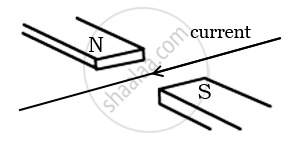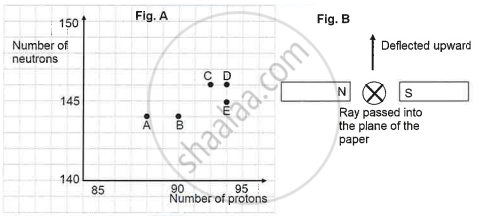Advertisements
Advertisements
Question
State Fleming's left-hand rule. Explain it with the help of labelled diagrams.
Solution
According to Fleming's left-hand rule, when thumb, forefinger and central finger are kept mutually perpendicular:
(a) Thumb represents force.
(b) Forefinger represents magnetic field.
(c) Central finger represents current.

APPEARS IN
RELATED QUESTIONS
Which of the following property of a proton can change while it moves freely in a magnetic field? (There may be more than one correct answer.)
State the form of magnetic field lines around a straight current-carrying conductor.
The force exerted on a current-carrying wire placed in a magnetic field is zero when the angle between the wire and the direction of magnetic field is:
45°
60°
90°
180°
force experienced by a current-carrying straight conductor placed in a magnetic field which is perpendicular to it.
Name the following diagram and explain the concept behind it.

Name and state the rule of determine the direction of force experienced by a current carrying straight conductor placed in a uniform magnetic field which is perpendicular to it.
A current flows in a wire running between the S and N poles of a magnet lying horizontally as shown in the figure below:

The force on the wire due to the magnet is directed ____________.
The strength of magnetic field around a current-carrying conductor is ____________.
Assertion (A): A current carrying straight conductor experiences a force when placed perpendicular to the direction of magnetic field.
Reason (R): The net charge on a current carrying conductor is always zero.
|
The graph (fig A) illustrates the correlation between the number of protons (x-axis) and the number of neutrons (y-axis) for elements A, B, C, D, and E in the periodic table. These elements are denoted by the letters rather than their conventional symbols. When the element C, depicted in the graph, undergoes radioactive decay, it releases radioactive rays. When these rays are directed into the plane of the paper in the presence of a magnetic field, as indicated in the fig B, they experience deflection, causing them to move upwards.
|
Name the law used to identify the radioactive radiation emitted by the element.

